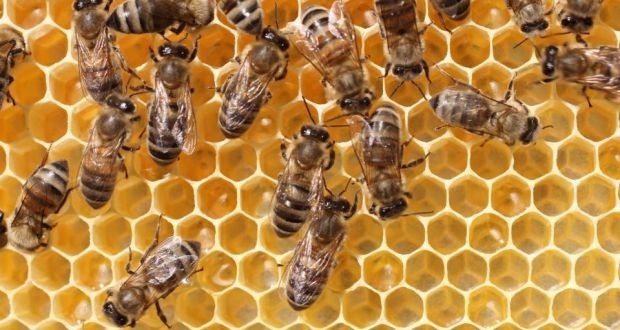Call To Action: Part Two

Call To Action - Part Two: The X Factor = The Ability to Imagine
My Call To Action in Part One was clear: Don’t act without being aware of what led you to act in the first place.
My statement in Part Two may need a little more explaining: All you become aware of is what was originally imagined by you in the first place.
Nothing, no thinking, no decision, no choice, no action, takes place without us using, to a greater or lesser degree, our human capacity to imagine.
Sara Jacobovici
Summary of Part One: CTA = The Equation; what equals ACTION?
Conceptual definitions of the factors used in the equation.
The Result:
A=ACTION: an act of will; the fact or process of doing something, typically to achieve an aim.
The Process:
1. S=SENSATION: a mental process (as seeing, hearing, or smelling) resulting from the immediate external stimulation of a sense organ often as distinguished from a conscious awareness of the sensory process.
2. P=PERCEPTION: the state of being or process of becoming aware of something through the senses.
3. Mn=MEANING: what is meant by a word, text, concept, or action.
4. T=THINKING: the action of using one's mind to produce thoughts.
5. K=KNOWING: the state of being aware or informed.
Kh=Knowing how
Kw=Knowing why
AbK=Abstract based Knowledge
RbK=Rooted based Knowledge
6. C=CHOICE: an act of selecting or making a decision when faced with two or more possibilities.
7. De=DECISION: the act or process of deciding; a determination arrived at after consideration: a conclusion.
8. D=DOING: the activities in which a particular person engages by exerting an effort.
9. M=MOVEMENT: a series of organized activities working toward an objective; an organized effort to promote or attain an end.
Mdu=Movement duration
Mdi=Movment direction
The Equation:
Sensation(S) + Perception(P) = Meaning(Mn)Meaning(Mn) {Thinking(T) + Knowing(K)} + Choice(C) = Decision(De)
Decision(De) x Doing(D) = Movement(M)
Movement(M){Movement’s duration(Mdu + Movement’s direction(Mdi)} = ACTION
Introduction to Part Two: We are sensory beings.
· Our Central Nervous System is continuously, perceiving, sorting, choosing and responding to information received through our sensory system.
· As the amniotic fluid is a greater sound carrier than water, our sensory environment begins in utero. As well as the auditory stimulation that occurs, the fetus experiences movement.
· After birth, our experiences continue to be shaped, formed and influenced by what we hear, see, smell, taste, touch, as well as experience proprioceptively and vestibularly.
Meaning is then created by the interactions between our internal and external environments and those sensory experiences. This is the ground work that is laid for choices we make in the future as we continue to interpret and associate the information we receive. Over the years, we collect and store these experiences. We construct and form memories.
Imagine:
One skill that we acquire is the ability to imagine; the ability to recreate sensory impressions and feelings in our minds in the absence of external stimuli.
Example:
When individuals diagnosed as being in a vegetative state did not show observable responses to communication, Adrian Owen, a neuro-scientist, set out to look at whether technological devices can assist us in seeing the non-observable. He used the instruction “imagine” to the individuals in the vegetative state while observing their brain activity on a functional Magnetic Resonance Imagining (fMRI) machine.
“It was June 2006. Wimbledon was on, and in a headline-stealing study, Owen took fMRI scans of a 23-year-old woman in a vegetative state while he asked her to imagine playing tennis and walking through the rooms of her house. When healthy, conscious adults imagine playing tennis, they consistently show activation in a region of the motor cortex called the supplementary motor area, and when they think about navigating through a house, they generate activity in the parahippocampal gyrus, right in the centre of the brain. The woman, who had been unresponsive for five months after a traffic accident, had strikingly similar brain activation patterns to healthy volunteers who were imagining these activities, proving, in Owen's mind, that she was conscious.”
In using our imagination, we can alter, combine, synthesize and otherwise manipulate sensory images to form images and ideas of things never before perceived in reality. We can plan for the future. We can conjure things that do not yet exist or may never will. We can take the creative leaps we call scientific hypotheses and artistic visions.

The Equation of Part One with the X Factor, Imagine, inserted.
Sensation(S) + Perception(P) = Meaning(Mn)
Meaning(Mn)to the power of Imagine(Im){Thinking(T) + Knowing(K)} + Choice(C) = Decision(De)
Decision(De) x Doing(D) = Movement(M)
Movement(M){Movement’s duration(Mdu + Movement’s direction(Mdi)} = ACTION
By factoring in the ability to imagine into the equation that leads to action, we can then perhaps see the bigger picture.
The Equation: example from Part One, now with the added factor of Imagine(Im)
Sensation(S) + Perception(P) = Meaning(Mn)Once this is factored in, the reading of the rest of the equation takes on a whole new perspective.
S: Hearing a consistent reassuring tone of voice + P: The voice is consistent; encouraging and supportive = M: It’s safe to venture out. I am not alone. I have support.
Meaning(Mn) to the power of Imagine(Im) {Thinking(T) + Knowing(K)} + Choice(C) = Decision(De)
M: It’s safe to venture out. I am not alone. I have support.Im: I can imagine myself speaking to my partner and investors, communicating to them to the best of my ability that this step makes sense in the development of the company. I can imagine the infrastructure the company needs in order to accommodate the increase in territory. I can imagine myself leading with confidence.
{T: I can attempt this. + K: I know how and why I am venturing out.} + C: I will search for a partner for this venture. = De: I will expand my business from local to statewide.
Decision(De) x Doing(D) = Movement(M)
De: I will expand my business from local to statewide. x D: I will seek investors. = M: I will approach investors who have a history with me.
Movement(M){Movement’s duration(Mdu + Movement’s direction(Mdi)} = ACTION
M: I will approach investors who have a history with me. = A: My new partner and I will design a business plan to expand the existing local business to a statewide business and approach investors with whom I have a successful history and would invest in the expansion of the business.
One way to quickly access our ability to imagine is by using metaphors.
Michael Michalko (2012) states that "creativity, no matter which of its many definitions you favor, requires looking at the world in a different way and trying fresh approaches to problems. An easy way to shake up your thinking is metaphorically. A metaphor is a figure of speech in which a word or phrase that means one thing is used to describe an object or idea to which it is not literally applicable."
Our first language to express and communicate our experiences is non-verbal. We communicate through vocalizations, gestures, and movements. Then we begin to utilize visual signs and symbols to enhance that communication. As we develop oral and written language, we are able to expand greatly on our ability to communicate and express our thoughts and feelings.
When we think metaphorically we utilize our ability to imagine. Our imagination is given expression through the non-verbal (visual symbols) and verbal language of metaphors. The metaphor is "out there" to make it possible for us to hear, see and experience things "in a new light which, in turn, may lead to solutions that might not otherwise be anticipated." (Michalko, M. 2012)
Metaphors permeate human thought and action. As such, becoming conscious of their use, and applying this language in a stimulating and meaningful way, will provide thinkers; critical, divergent, scientific, or otherwise, with the means to creatively express their thoughts, ideas and solutions to the problems being addressed.
Logic will get you from A to B. Imagination will take you everywhere. - Albert Einstein
Articles from Sara Jacobovici
View blog
I am posting this is an “Out of the Comment Box” buzz as I am catching up on the works of some of th ...

Image credit: steveoatesblog - WordPress.com · With Q&A@beBee, I ask some of the most interesting pe ...

I am sure you can relate to my experiences of being drawn into dynamic posts and discussions. It is ...
You may be interested in these jobs
-

Senior QA Automation Engineer
Found in: beBee S2 IL - 6 days ago
Palo Alto Networks Tel Aviv-Yafo, Israel Paid WorkOur Mission · At Palo Alto Networks everything starts and ends with our mission: · Being the cybersecurity partner of choice, protecting our digital way of life. · Our vision is a world where each day is safer and more secure than the one before. We are a company built on the fou ...
-

O&M Adv Eng. Operation
Found in: beBee S2 IL - 5 days ago
GE Remote, Israel OTHERJob Description Summary · Assist Owner in all matters pertaining to the operation of the Power Plant with a goal of achieving and maintaining reliable, available, cost-effective, safe and environmentally compliant operation.Job Description · Assist Owner in all aspects regarding ...
-
יועץ/ת לצוות מחירי העברה 1
Found in: beBee S2 IL - 1 day ago
EY TelAviv, Israelתיאור התפקיד · בעולם של חברות רב לאומיות הפועלות במאות שווקים בעולם, נושא מחירי העברה עומד בליבת המודלים העסקיים של החברות. · עולם מחירי העברה משלב יכולות ניתוח גבוהות, הבנה של מודלים כלכליים ויכולות ייעוץ. · התפקיד כולל בניית מודלים, ניתוחים, הכנת דוחות, מעורבות בהליכי שומות ...

Comments
Sara Jacobovici
7 years ago #6
Great observations Tony \ud83d\udc1d Rossi. Changes have happened at a rate that we haven't really been able to adapt to. I know it sounds cliche but...only time will tell, how we make out. I remain optimistic however that enough of us will still value our innate ability to imagine and evolve with it. Sounds like you are doing just that.
Sara Jacobovici
7 years ago #5
I appreciate your contribution to the discussion Max J. Carter. For me it reinforces the fact that we are unique individuals and our identities are a work in progress. We are made up of all the parts and at different times in our lives which parts we use more or less is a choice we make. That's what makes it all so interesting. The equation may exist but the input is different each time.
Sara Jacobovici
7 years ago #4
Your comment Paul Frank Gilbert is layered with insight, experience and personal meaning. You bring up a lot of important aspects of our life cycle. I like how you end off your comment with an important "call to action", "...we absolutely need to encourage exploration for nothing other than the possibilities of it."
Sara Jacobovici
7 years ago #3
Paul Frank Gilbert, thank you for taking the time to read and comment. I agree, we seem to push the use of our imagination to the side after our childhood and remember it again once we look back and reflect on our lives. This is why I am a strong advocate to reconnecting with this innate ability. It sounds like you are someone who doesn't need a reminder.
Sara Jacobovici
7 years ago #2
Ali Anani, your insights, connections and the question you raise are valuable contributions to this discussion. Thank you. And thank you for your generous and supportive words.
Sara Jacobovici
7 years ago #1
Got it! Thanks Pascal Derrien.